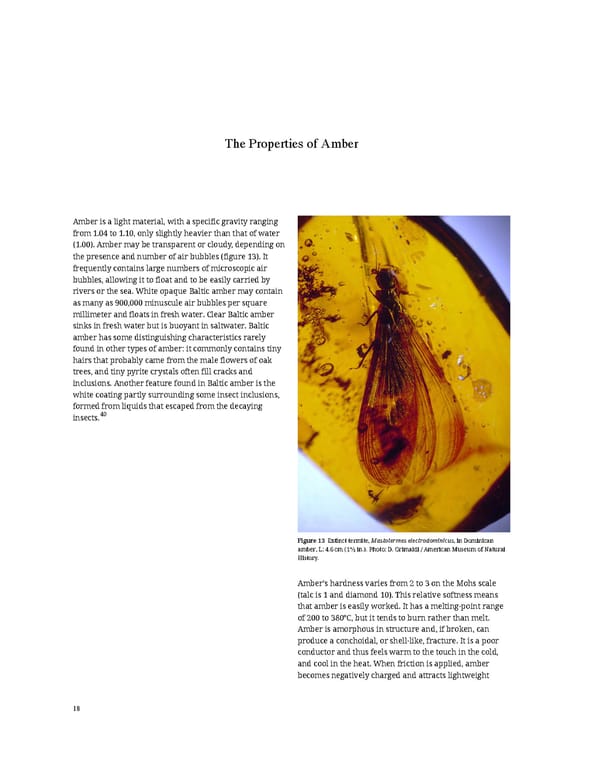The Properties of Amber Amber is a light material, with a specific gravity ranging from 1.04 to 1.10, only slightly heavier than that of water (1.00). Amber may be transparent or cloudy, depending on the presence and number of air bubbles (figure 13). It frequently contains large numbers of microscopic air bubbles, allowing it to float and to be easily carried by rivers or the sea. White opaque Baltic amber may contain as many as 900,000 minuscule air bubbles per square millimeter and floats in fresh water. Clear Baltic amber sinks in fresh water but is buoyant in saltwater. Baltic amber has some distinguishing characteristics rarely found in other types of amber: it commonly contains tiny hairs that probably came from the male flowers of oak trees, and tiny pyrite crystals often fill cracks and inclusions. Another feature found in Baltic amber is the white coating partly surrounding some insect inclusions, formed from liquids that escaped from the decaying insects.40 Figure 13 Extinct termite, Mastotermes electrodominicus, in Dominican amber, L: 4.6 cm (14⁄5 in.). Photo: D. Grimaldi / American Museum of Natural History. Amber’s hardness varies from 2 to 3 on the Mohs scale (talc is 1 and diamond 10). This relative softness means that amber is easily worked. It has a melting-point range of 200 to 380°C, but it tends to burn rather than melt. Amber is amorphous in structure and, if broken, can produce a conchoidal, or shell-like, fracture. It is a poor conductor and thus feels warm to the touch in the cold, and cool in the heat. When friction is applied, amber becomes negatively charged and attracts lightweight 18
 Ancient Carved Ambers in the J. Paul Getty Museum Page 27 Page 29
Ancient Carved Ambers in the J. Paul Getty Museum Page 27 Page 29